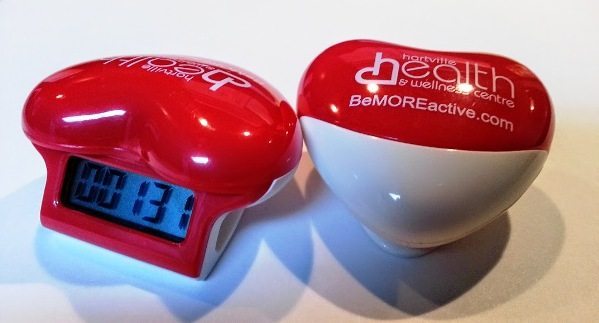What Kind of Wearable Activity Tracker Should You Use?
Galaxy Gear? Fitbit? Jawbone? Garmin? Fuelband? Apple iWatch? An app on your smartphone? Old-school pedometer? It doesn’t really matter. I don’t care what kind of wearable activity tracker you use, just do something to measure your activity.
Measuring your physical activity raises awareness of how much you move. Physical activity is movement. And, moving more is a good thing for your health and wellness.
I also don’t care how “accurate” your wearable activity tracker is; the fact that you are measuring your activity throughout the day is the key because measurement itself creates improvement. This means if you want to increase your activity, measure how much you move. When people are assigned to wear a pedometer as part of randomized controlled trials, they walk at least one extra mile per day on average.
Tom Rath, in his book Eat Move Sleep makes the point that being active throughout the day trumps exercise. I agree. Be intentional about building movement into your normal lifestyle so you don’t have to worry about whether you’re “exercising” enough all the time.
Things you can do at work
There are simple changes you can make to reduce your sitting time and increase your movement at work:
- Use a height-adjustable desk (like Vari) so you can work either standing or sitting.
- Locate your printer, scanner, photocopier, and waste bin away from your workspace so that you need to walk to them.
- Vary your work tasks throughout the day so that you change your posture and use different muscles, e.g. do some filing after a period of typing.
- Stand during phone calls.
- Use headsets or the speakerphone during teleconferences so you can stand or move around your workspace.
- Walk to your colleagues’ desks instead of phoning or emailing.
- Have standing or walking meetings.
- Take regular short breaks during long meetings or training sessions so that participants can stand up for a few minutes.
- Stand at the back of the room during presentations.
- Walk to the water cooler to refill your glass or water bottle.
- Eat lunch and morning and afternoon coffee/tea away from your desk.
Things you can do at home
There are also simple changes you can make to reduce your sitting time and increase your movement at home:
- Instead of asking someone to bring you a drink, get up off the couch and get it yourself.
- Walk on the treadmill while watching television.
- Throw away your television remote control.
- Stand up while talking on the telephone.
- Park farther away at the grocery store or shopping mall and walk the extra distance.
- Wear your walking shoes and sneak in an extra lap or two around the shopping mall.
- Stretch to reach items in high places and squat or bend to look at items at floor level.
- Keep your exercise equipment repaired and use it!
- Do housework yourself instead of hiring someone else to do it.
And one more thing…
While it may be trendier to do activities like Cross Fit and boot camps, people who do these or other high-intensity workouts but then sit for the rest of their day are fooling themselves. These folks are called the “active sedentary” by some scientists because you can’t offset 10 hours of sitting still with one hour of exercise. Bottom line, be more active, because being more active is often a missing link to your better health and wellness.
P.S. Did you know you have the to right to a pedometer? If you cannot afford one, one will be provided for you at no cost to you. Stop by our facility, ask for a pedometer and it will be given to you. Free.

